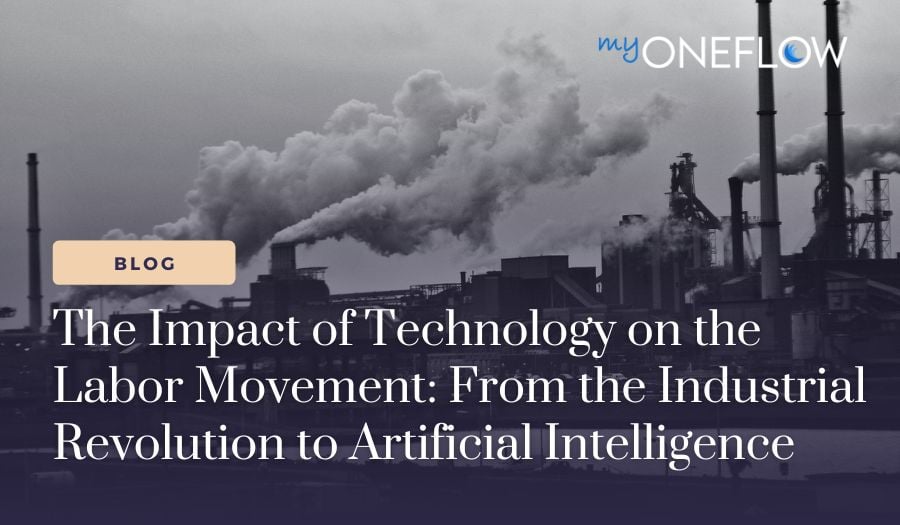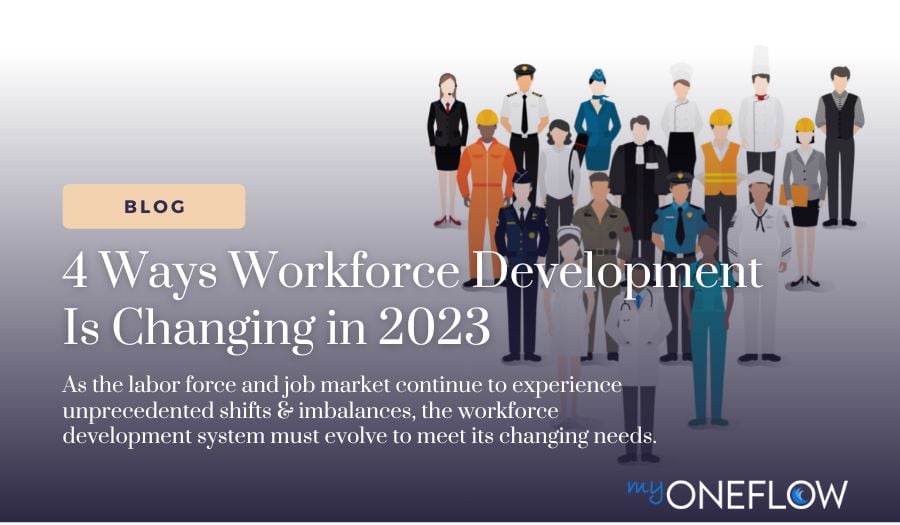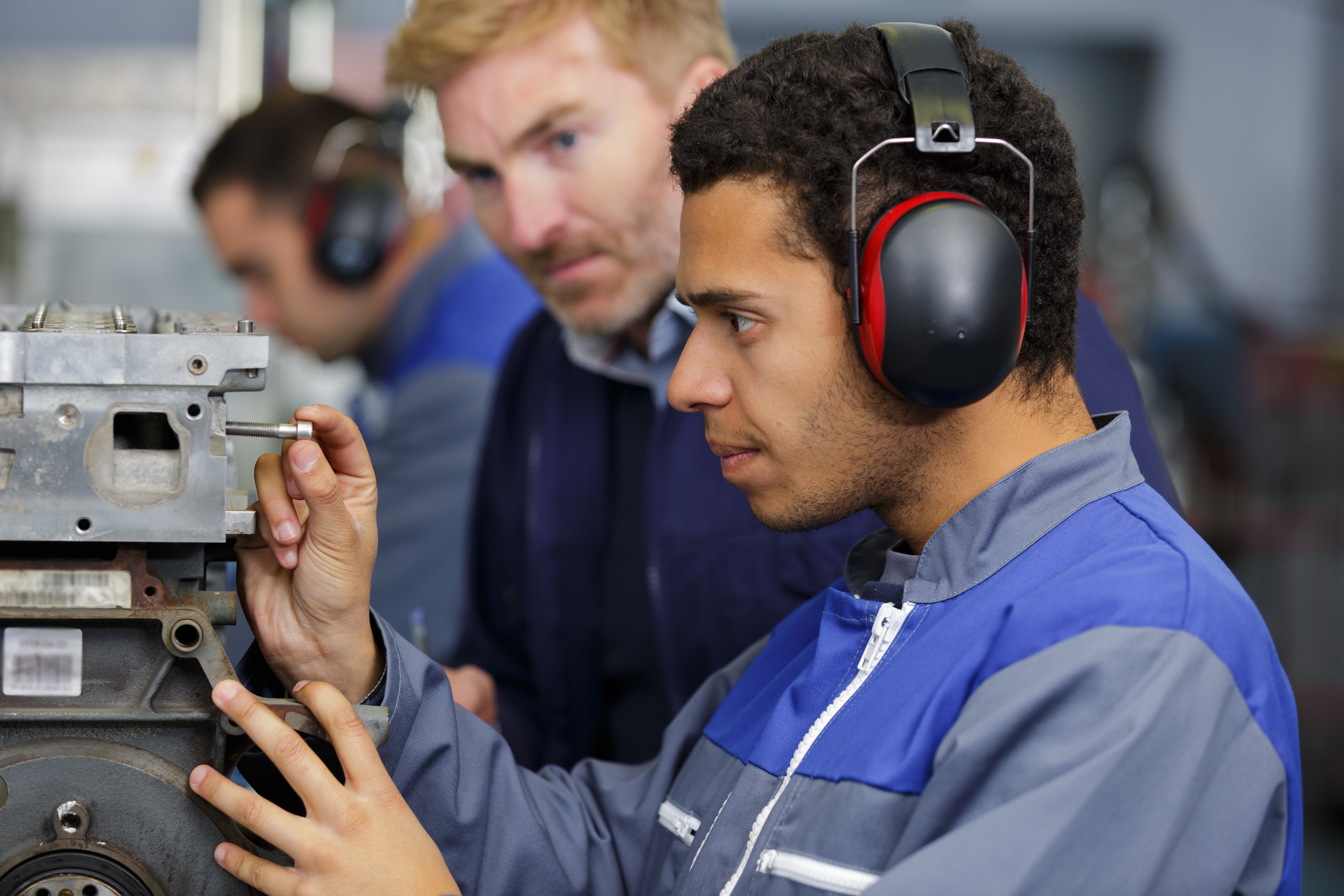4 Ways Workforce Development Is Changing in 2023
The U.S. workforce has experienced rapid change since the onset of the pandemic in 2020. Between the transition to virtual/hybrid work, the immense...

The labor movement has been a vital force in advocating for the rights and well-being of workers since its inception during the Industrial Revolution. As we celebrate Labor History Month this May, it is crucial to understand the origins and evolution of the labor movement and the transformative role technology has played throughout history. From the steam-powered machines of the 18th century to the more recent rise of computers and artificial intelligence, technology has continuously shaped labor practices, working conditions, and workers' rights.
This blog post will delve into specific examples that demonstrate the impact of technological advancements on the labor force. We aim to highlight the significance of the ever-changing relationship between technology and the labor movement while emphasizing the importance of adapting to new challenges and opportunities to ensure a fair and equitable future for all workers.
The Industrial Revolution spanned from the late 18th century to the mid-19th century and marked a significant turning point in human history. With rapid advancements in technology and manufacturing processes, this period paved the way for a new era of economic growth and societal progress.
Key technological innovations during the Industrial Revolution included:
However, these advancements came with a cost. Workers faced harsh conditions, including long hours and low wages, as employers sought to maximize profits at their expense. This led to the emergence of the labor movement, which aimed to fight for workers' rights and improve working conditions.
Labor unions played a pivotal role in advocating for workers during this time. Some of their key contributions included:
The birth of the labor movement, with labor unions at its forefront, played a crucial role in ensuring that workers' rights were not overlooked in the pursuit of industrial progress. By organizing collective action and advocating for legislative change, labor unions helped create a more just and equitable workplace for future generations.
The 20th century witnessed remarkable technological advancements that revolutionized various industries and reshaped the labor landscape. Some notable innovations included:
These advancements, however, posed significant challenges to the labor movement, such as:
To address these challenges, labor unions adapted their strategies and focused on the following initiatives:
As the world of work continues to evolve, labor unions will be called on to adjust their strategies and initiatives accordingly. Adopting new retraining programs and advocating for fair trade policies can ensure that workers can thrive in an ever-changing economy while protecting them from unfair wages or working conditions.
The Information Age, characterized by the rise of the internet and digital technology, has ushered in a new era of work known as the gig economy. This shift has had significant implications for workers' rights:
Labor unions have recognized these challenges and are taking action to adapt to this new landscape:
As the gig economy grows, labor unions must remain vigilant in their efforts to protect and support this new workforce. By organizing gig workers and pushing for legislative changes, they can ensure that these individuals receive fair wages, benefits, and recognition of their rights as employees. This will help create a more robust, resilient workforce that can drive economic growth while protecting those who work within it.
The rapid advancements in artificial intelligence (AI) are transforming how we work and live. As AI continues to develop, it has the potential to significantly impact the job market:
However, AI also presents challenges for the labor movement:
Labor unions can play a crucial role in preparing for these challenges:
While artificial intelligence offers promising opportunities for increased productivity and job creation, it poses significant challenges for the labor movement. Labor unions must actively work to upskill their members to ensure that the benefits of AI are shared equitably and that workers are well-equipped to navigate the changing job landscape.
The labor movement has experienced significant transformations as technology has evolved, from the Industrial Revolution to the Information Age and the rise of artificial intelligence. Today, modern case management systems like myOneFlow are revolutionizing workforce development by streamlining processes and enhancing efficiency for organizations. With features such as online forms, integrated e-signatures, automated communication, and virtual service delivery, myOneFlow simplifies administrative tasks and empowers organizations to focus on their core mission. By proactively adapting innovative new technology, upskilling workers, and advocating for progressive policies, we can ensure that the labor movement thrives and protects workers' rights in an ever-changing technological landscape.

The U.S. workforce has experienced rapid change since the onset of the pandemic in 2020. Between the transition to virtual/hybrid work, the immense...

The recent passage of Workforce Pell legislation marks a significant shift in federal financial aid, extending Pell Grant eligibility to short-term,...
.png)
Government social services are crucial in supporting individuals and families in need, providing resources and assistance to significantly improve...